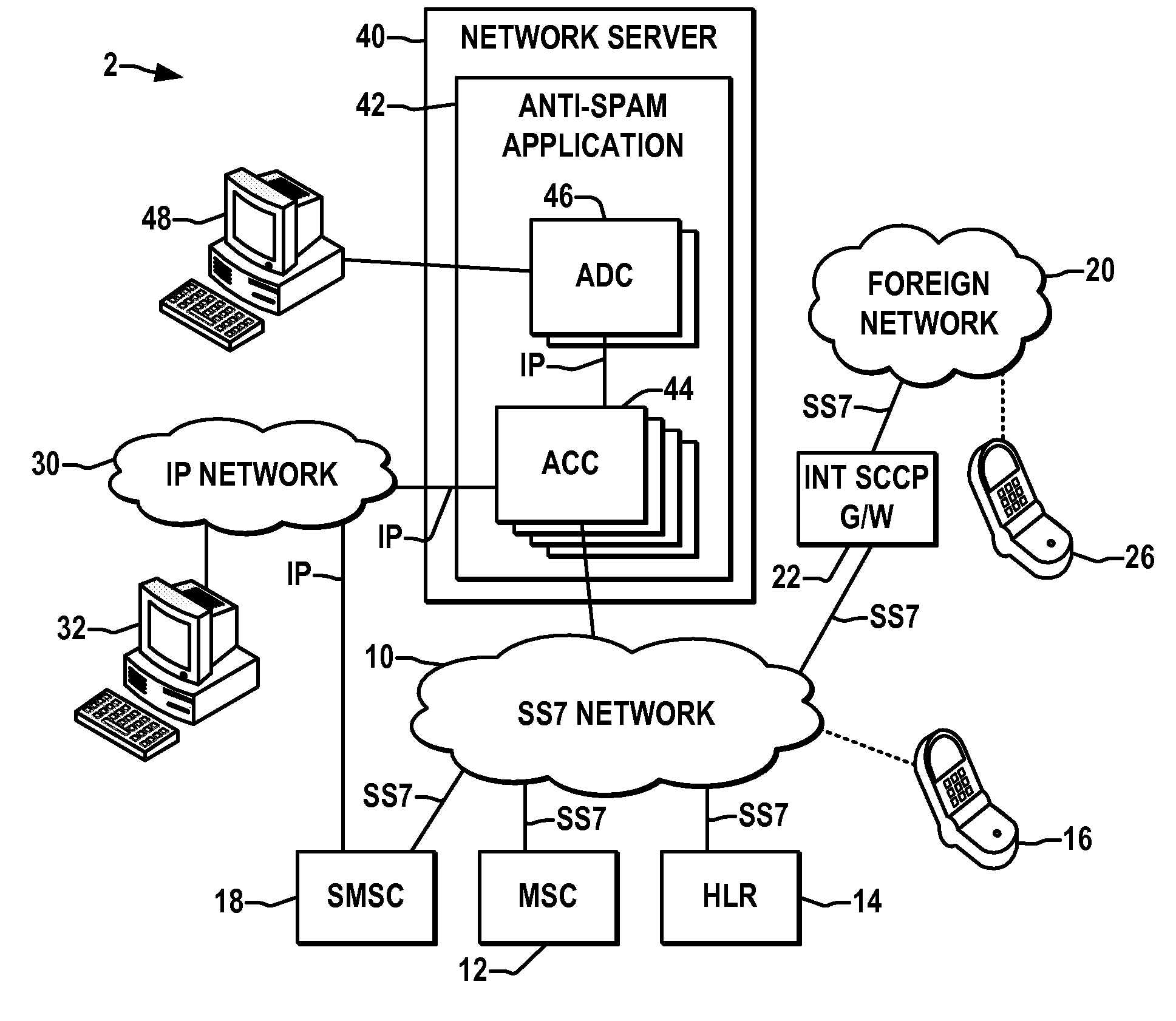MAP message processing for SMS spam filtering
a message processing and spam filtering technology, applied in the field of map message processing for sms spam filtering, can solve the problems of spam occupying service provider resources, affecting the basic understanding of spam, and affecting so as to facilitate the filtering of spam, facilitate the basic understanding, and mitigate the effect of spam-related traffi
- Summary
- Abstract
- Description
- Claims
- Application Information
AI Technical Summary
Benefits of technology
Problems solved by technology
Method used
Image
Examples
Embodiment Construction
[0017]Referring now to the figures, wherein the showings are for purposes of illustrating the exemplary embodiments only and not for purposes of limiting the claimed subject matter, FIG. 1 provides a view of a communications system 2 into which the presently described embodiments may be incorporated or in which various aspects of the invention may be implemented. Several embodiments or implementations of the various aspects of the present invention are hereinafter illustrated and described in conjunction with the drawings, wherein like reference numerals are used to refer to like elements throughout and wherein the figures are not necessarily drawn to scale.
[0018]As shown in FIG. 1, the exemplary telecommunications system 2 includes various operationally interconnected networks of various topologies, including an SS7 network 10 in which various MAP messages may be exchanged and operated on, and wherein various network elements may be operatively coupled to provide mobile telecommuni...
PUM
 Login to View More
Login to View More Abstract
Description
Claims
Application Information
 Login to View More
Login to View More - R&D
- Intellectual Property
- Life Sciences
- Materials
- Tech Scout
- Unparalleled Data Quality
- Higher Quality Content
- 60% Fewer Hallucinations
Browse by: Latest US Patents, China's latest patents, Technical Efficacy Thesaurus, Application Domain, Technology Topic, Popular Technical Reports.
© 2025 PatSnap. All rights reserved.Legal|Privacy policy|Modern Slavery Act Transparency Statement|Sitemap|About US| Contact US: help@patsnap.com



